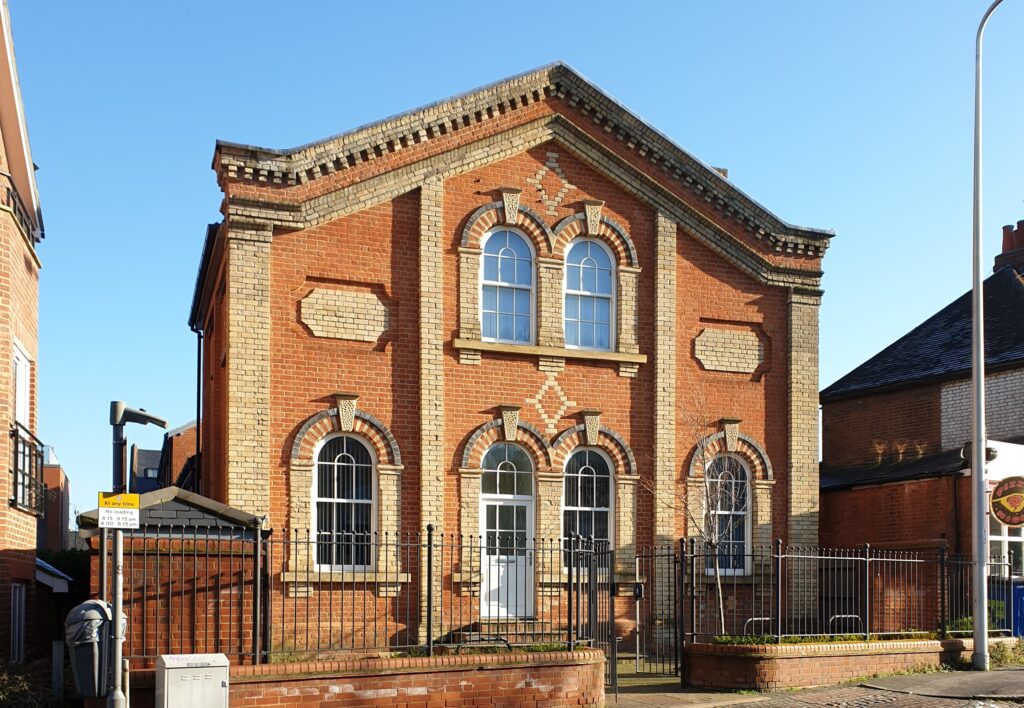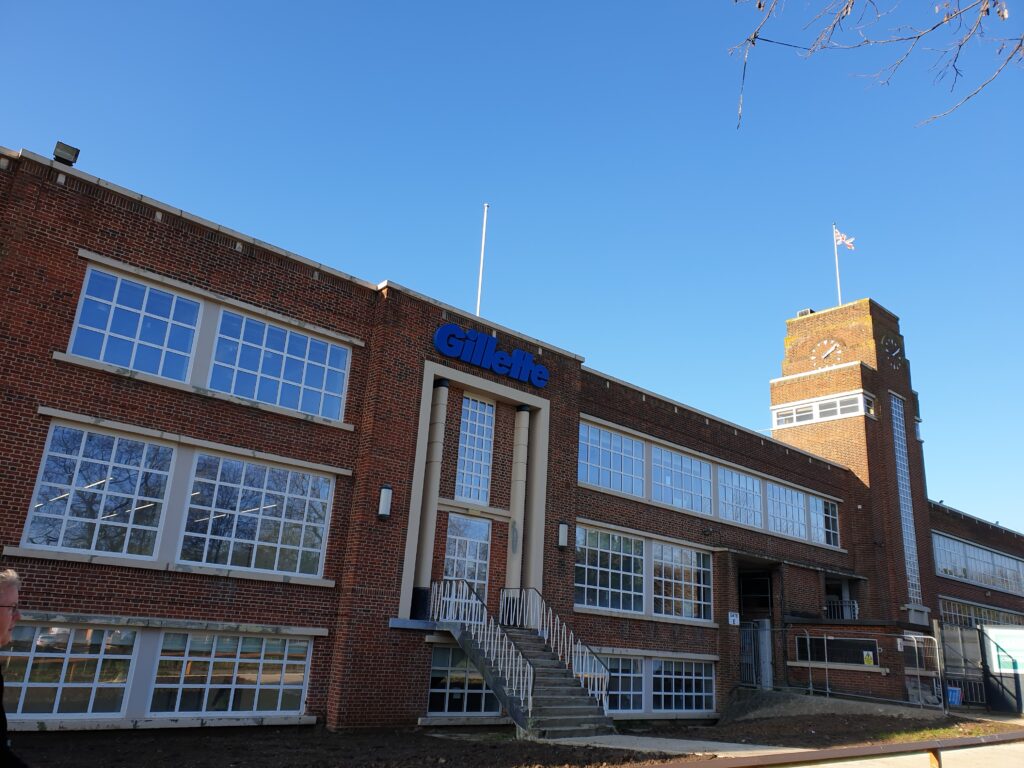Listing began in 1882 when the first powers of protection for buildings and sites were established in England. Since this time the range of sites and structures listed have grown and once ‘listed’ they are protected by statutory powers. Historic England manage and curate the national Listing process. Information on the process and selection criteria can be found on the Historic England website. When we hear the terms Grade I or Grade II listed it is this national listing that is being quoted.
Historic England maintains the register of all Listed Buildings and sites in the country – The National Heritage List for England (NHLE). The NHLE can be searched by a number of criteria. You may find using the ‘Map Search’ or ‘Advanced Search’ options of use to distinguish Reading the place from reading the activity.
Examples of Reading’s National Listed Buildings include:


Members of the public may update the information held by Historic England using the Missing Pieces Project. You will need to have an account with Historic England to upload to the site. You can add photos and information about the place which will help to enrich this national archive. Historic England vet all additions before they are posted online.
British Listed Buildings provides another way to look at Historic England’s listings and it includes images submitted by members of the public.
Reading’s Local List
Local Listing provides an opportunity for communities to have their views on local heritage. They are managed and maintained at a local government level and while they give protection it is not to the same level as national listing. Local Lists play an essential role in building and reinforcing a sense of local character and distinctiveness in the historic environment. Local lists can be used to identify significant local heritage assets to support the development of Local Plans. Encouraging the use of local lists strengthens the role of local heritage assets as a material consideration in the planning process.
Reading Borough Council started its Local List in 2013. The buildings on the List have usually been added because they are under threat of demolition, and are often added at the behest of the Reading Civic Society or Reading’s Conservation Area Advisory Committee (CAAC). Reading’s Locally Listed Buildings can be found on the Council’s website.
Examples on Reading’s Local List include:


If you wish to propose a building for adding to the Local List, we suggest you contact Reading Civic Society first as we, and the CAAC, have a number of proposals at the draft stage. We can also give advice drawing on our experience: use readingcivicsociety@gmail.com
Anyone may propose that a building be added to the Local List. Reading Borough Council provides a Nominations Form on this page that has to be completed in full. Please note you need to sign-in to the Council’s website to use the form.
The Council will not consider for addition to the Local List a building that is already in a Conservation Area as the Conservation Area designation gives greater planning control than Local Listing.
Historic England has produced an advice note ‘Local Heritage Listing: Identifying and Conserving Local Heritage’ for local authorities, community groups and other interested stakeholders in the identification and management of significant local heritage assets using a local heritage list. It encourages a more consistent approach to the identification and management of local heritage assets across England and signals a move away from the buildings-led approach to local listing to encompass the full range of heritage assets that make up the historic environment and ensure the proper validation and recording of local heritage assets.
Living in a Listed Building
Many people think that internal works to their Listed property do not need planning consent, only external changes. Regular maintenance and ‘like for like’ repairs do not need Listed Building Consent & Planning Permission, but this would be required if the repairs include removal of historic material or changes to its character. Planning permission will usually be required for work in basements too.
Finding information on how to proceed in Reading is not easy to find so we have collated guidance on this topic covering work planned on buildings and within the boundary of a home, including the land immediately surrounding it (called curtilage).
Before starting any work, expert advice should be taken. What we have provided here is for information and has not been legally verified. Please note that changes to the rules happen frequently and differ between geographic areas.
Listed Buildings have additional protection in law. You can make changes, but you may need to apply for ‘Listed Building Consent’, and you will need to be careful when carrying out work that could affect the character of the building.
Historic England have published a comprehensive guide – A Guide for Owners of Listed Buildings. The general theme is ‘retain and repair’ and not to replace. Reading Borough Council published Listed Buildings in Reading: a Guide by RBC in 2002. Whilst some of the contact details are out of date the information provided is still valid. Also, the Historic Towns and Villages Forum website provides a publication which explains the process, Listed Building & Listed Building Consent.
You are likely to need Listed Building Consent for:
- alterations (inside or out) or extensions that, in the opinion of the Council, are likely to affect the appearance or character of a Listed Building;
- alterations or extensions to buildings, objects or structures (including gates and walls) within the curtilage of a Listed Building;
- demolition of a building, object or structure that is listed or is within the curtilage of a Listed Building. This can include the removal of only part of such buildings (even a chimney stack, door, window or a garden wall);
- any new structure that will be physically linked to a Listed Building.
Do I need Listed Building Consent to do work inside my Listed Building?
This is a common misunderstanding. If the work is simply maintenance, then Listed Building Consent is not likely to be required. Regular maintenance and “like for like” repairs do not need listed building consent, but this would be required if the repairs include removal of historic material or changes to its character.
If it is intended to remove original features, to reinstate them, or change the layout of the rooms then Listed Building Consent is required. It is also often required when fixing damp problems. Painting and internal decorating does not need Listed Building Consent but any external painting may require consent as it may affect the character of the Listed Building. Replacement of modern kitchen and bathroom fittings does not require consent.
Examples of work which usually require Listed Building Consent include (not exhaustive):
- the painting of stonework or brickwork
- the addition of render or cladding
- the replacement of existing doors or windows
- changes to the roof covering and other external features
- the alteration or removal of beams, fireplaces, staircases, porches, shutters or other old features (inside or out)
- the erection of signs, security equipment or satellite antennae
It is a criminal offence to carry out work that requires Listed Building Consent without consent having first been obtained (even if you did not know that the building was ‘Listed,). Carrying out unauthorised work is punishable by a fine or prison sentence, and it can also result in a ‘Listed Building Enforcement Notice’ requiring the reinstatement of those features that have been altered or removed. For all cases of alterations listed building consent is required before work is carried out.
Applications for Planning Permission and for Listed Building Consent
You are likely to need planning permission for new buildings and for major changes to existing properties and the local environment. You also probably need permission to carry out minor work on Listed Buildings, in conservation areas or on trees protected by preservation orders.
Applications should be made through Reading Borough Council’s Planning Portal well in advance of the work commencing. The Portal gives guidance on the process and costs. Guidance is also available on The Planning Portal, a partnership with local authorities aiming to transform the planning process – Do you need permission? and Listed Building Consent.
Unless you are very knowledgeable it is better to submit an enquiry well before you plan to undertake the work, even if you do not have full details. Reading Borough Council’s Planning Department are not able to deal in detail with general telephone enquiries about whether Listed Building Consent is required or questions about any works planned. There is a pre-application service that provides advice to help owners make sensible, realistic and successful planning applications.
Enforcement
Notice of planned changes to Listed Buildings (and other Planning Applications) are advised by the Planning Case Officer fixing a yellow planning notice to the building. This enables members of the public to find out about the changes and to either support them, object or raise questions.
If you spot changes being made to a Listed Building, or a building in a Conservation Area, that you believe require consent and you have not seen the yellow planning notice then you should report this to Reading Borough Council. The Council has a Local Planning Enforcement Plan detailing how it deals with breaches of planning control.
